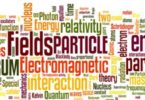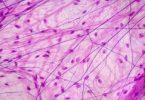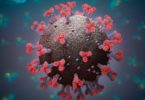Phylum Porifera Quiz:
Which of the following is harmful to the pearl industry?
(a) Spongilla
(b) Euspongia
(c) Hyalonema
(d) Cliona
The mesenchyme of sponges consists of skeletal elements and
(a) Pinacoderm
(b) Choanoderm
(c) Gemmules
(d) Free amoeboid cells
Freshwater sponges are also grouped in the
(a) Calcarea
(b) Heterocoela
(c) Demospongia
(d) Trachinellida
Totipotent cells of sponges are
(a) Thesocytes
(b) Archaeocytes
(c) Myocytes
(d) Chromocytes
Which one of the following is commonly called ‘Edible sponge mushroom’?
(a) Sargassum
(b) Morchella
(c) Agaricus
Sponges are
(a) Diploblastic
(b) Monoblastic
(c) Triploblastic
(d) Tetrablastic
Related: basic concepts of chemical bonding test
Which of the following is a boring sponge?
(a) Cliona
(b) Chalina
(c) Euplectella
(d) Hyalonema
The most important character of all sponges:
(a) Coelenteron
(b) Herbivorous nutrition
(c) Choanocytes
(d) Only sexual reproduction
Sycon belongs to a group of animals which are best described as
(a) Unicellular or acellular
(b) Multicellular without any tissue organization
(c) Multicellular with a gastrovascular
(d) Multicellular having tissue organization but no body cavity
Which is given as a gift in Japan?
(a) Hyalonema
(b) Euplectella
(c) Tethya
(d) Leucosolenia
Bath sponges are generally found in
(a) Red Sea
(b) Gulf Mexico
(c) Pacific Islands
(d) Mediterranean sea
Related: morphology of flowering plants online test
Carmine particle put above the osculum of a sponge would be
(a) Left there
(b) Ingested and digested
(c) Thrown away
(d) Ingested and thrown away by Ostia
What is found in a sponge
(a) Choanocytes
(b) Nematocysts
(c) Amoebocytes
(d) Interstitial cells
Which of the following cells in sponges catch food?
(a) Pinacocytes
(b) Choanocytes
(c) Thesocytes
(d) Archaeocytes
Sponges are porifers because their bodies have
(a) Spicules in the skeleton
(b) Several pores
(c) Canal system
Related: biology Ecosystem test
The simplest type of canal system in Porifera
(a) Ascon type
(b) Leucon type
(c) Sycon type
(d) Radial type
What will happen if a sponge is cut into the maximum possible pieces
(a) These will die
(b) These will differentiate
(c) Every piece will form a sponge
(d) Some pieces will develop in organs
In sponges, there are:
(a) Radial symmetry
(b) A true coelom
(c) A single exit and several mouthlets
(d) A single mouthlet and several exits
Type of spongocoel found in Leucosolenia is
(a) Ascon
(b) Leucon
(c) Sycon
(d) Rhagon
The most distinctive character of the sponge is
(a) Presence of choanocytes
(b) Unicellular
(c) Marine
(d) Asexual reproduction
Related: logarithms problems
Nutrition is sponges is
(a) Extracellular
(b) Intracellular
(c) First extracellular and then intracellular
(d) First intracellular and then extracellular
What is left after a bath sponge disintegrates and dries?
(a) Silk fibres
(b) Muscle fibres
(c) Spongin fibres
(d) Nerve fibres
Glass Rope sponge is
(a) Hyalonema
(b) Euplectella
(c) Scypha
(d) Spongilla
Spongin fibers are secreted by
(a) Choanocytes
(b) Pinacocytes
(c) Amoebocytes
(d) Spongioblasts
A Chamber common to all types of canal systems of sponges is called
(a) Paragastric cavity
(b) Radial chamber
(c) Excurrent canal
(d) Incurrent canal
Related: Anaerobic respiratory MCQ questions
Sponges’ structure, corresponding to the mouths of other animals, is
(a) In the current canal
(b) Ostium
(c) Osculum
(d) Excurrent canal
The characteristics of sponges are
(a) Diploblastic
(b) Aquatics
(c) Link between living and nonliving
(d) The body has pores
“Venus flower basket” is the name of the dried skeleton of
(a) Euspongia
(b) Euplectella
(c) Spongilla
(d) Leucosolenia
The internal asexual propagule of some freshwater sponges is
(a) Gemmule
(b) Planula
(c) Stereoblastula
(d) Amphiblastula
Related: work energy and power MCQs
Sponges have evolved from
(a) Ciliates
(b) Flagellates
(c) Protozoans
(d) Choanoflagellates
Sponges capture food particles with the help of up
(a) Choanocytes
(b) Pinacocytes
(c) Thesocytes
(d) Trophocytes
The middle layer in the body wall of Porifera is
(a) Mesoderm
(b) Mesenchyme
(c) Mesogloea
(d) Mesentery
Members of phylum Porifera are
(a) Exclusively marine animals
(b) Exclusively freshwater animal
(c) Mostly freshwater animals, but few are marine animals
(d) Mostly marine animals, but few are freshwater animals
Related: chemical bonding and molecular structure worksheet
Which is universal for sponges?
(a) Marine
(b) Calcareous spicules
(c) Radial symmetry
(d) High regenerative power
Reproductive cells of sponges are formed from
(a) Pinacocytes
(b) Choanocytes
(c) Archaeocytes
(d) Trophocytes
Sponges are
(a) Sessile
(b) Planktonic
(c) Free-swimming
(d) Pelagic
In sponges, the canal system develops due to
(a) Gastrovascular system
(b) Folding of inner walls
(c) Porous walls
(d) Reproduction
Related: female reproductive system test questions and answers
Classification of Phylum Porifera is based on
(a) Nutrition
(b) Spicules
(c) Locomotion
(d) Reproduction
Digestion of food occurs in sponges Leucosolenia in
(a) Spongocoel
(b) Choanocytes followed by amoebocytes
(c) Amoebocytes
(d) Choanocytes
Current canals are lined by
(a) Choanocytes
(b) Pinacocytes
(c) Porocytes






